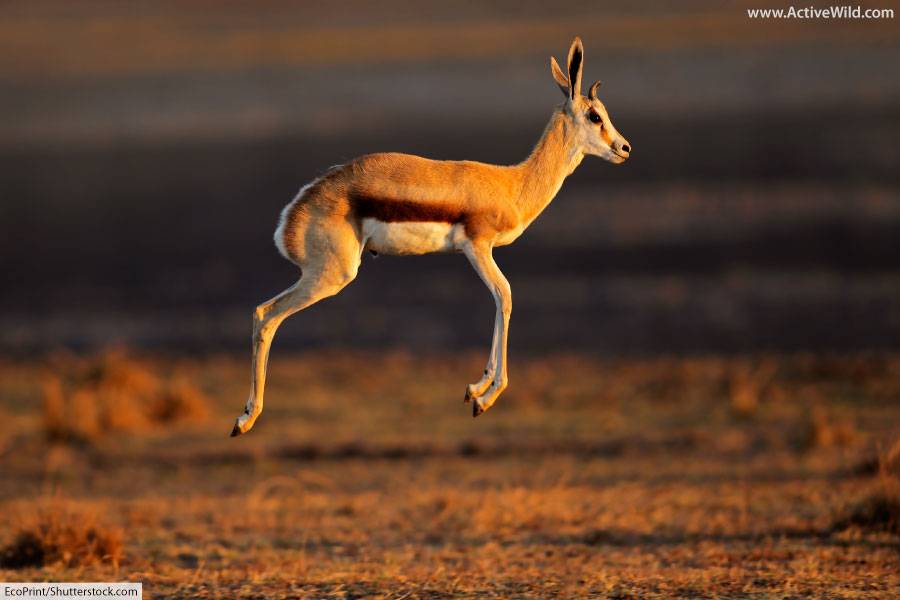
Examples of herbivores include hooved animals such as antelopes, bison, deer, horses, zebras, hippos, rhinos and tapirs. Other types of herbivorous animals include kangaroos, the koala, fruit bats, rabbits, hares, tortoises, the green iguana and giant panda.
On this page is a list of herbivorous animals with pictures and interesting facts. Read on to discover some of the world’s most amazing plant-eaters…
- You can see a list of carnivorous animals on this page: Examples of Carnivores
- You can see a list of omnivorous animals on this page: Examples of Omnivores
- Discover more about animal diets: What Do Animals Eat?
Use the index below to find information on a particular animal, or continue scrolling to browse all of the animals on the list.
Herbivores Examples
- Antelopes
- Beavers
- Bison
- Deer
- Elephants
- Giant Panda
- Giraffe
- Grass Carp
- Grasshoppers
- Green Iguana
- Hippos
- Hoatzin
- Horse
- Kangaroos
- Koala
- Land Snails
- Manatees
- Megabats
- Parrots
- Parrotfishes
- Rabbits
- Rhinoceroses
- Sloths (Three-Toed)
- Tapirs
- Tortoises
- Zebras
Herbivorous Animals
Herbivores are animals whose diets consist of plant material. Herbivores have numerous adaptations for this lifestyle, including: specialized teeth for cutting and grinding tough plant material; digestive systems evolved to break down plant material; and slow metabolisms due to the low energy content of food such as leaves and grass.
Herbivores often have adaptations such as speed, camouflage and acute senses to prevent themselves from becoming prey to carnivores. Herbivores such as antelopes and deer live in herds for added protection.
Specialist Herbivores
Some herbivores have specialized diets, for example, frugivores eat fruit, granivores eat seeds, xylophages eat wood and nectivores eat nectar. You can see other specialized types of herbivores on this page: What Do Animals Eat?
Ungulates
Many of the herbivorous animals in the list below are ungulates. An ungulate is hooved mammal belonging to one of either two orders: Perissodactyla (odd-toed ungulates) or Artiodactyla (Even-toed ungulates).
(Although whales and dolphins don’t have hooves, they are descended from animals that did, and are therefore considered to be ungulates.)
Most ungulates are herbivores. Their stomachs contain special bacteria for breaking down cellulose, a material found in the cell walls of plant cells.
Ruminants
Ruminants are a group of herbivorous even-toed ungulates that have evolved a specialized digestive system for obtaining nutrients from plants.
The stomachs of ruminants have four compartments. Within the first two compartments, the food is broken down into a soft material known as cud using a process known as fermentation.
The cud is regurgitated and chewed, further breaking down the food ready for digestion in the animal’s third and fourth stomachs. Examples of ruminants include antelopes, cattle, sheep, goats, deer and giraffes.
Herbivore Ecology
Herbivores are heterotrophs, as unlike autotrophs such as plants, they cannot produce their own food. (Plants make food via photosynthesis.)
All heterotrophs have to eat organic material: herbivores eat plant matter, carnivores eat animal matter, and omnivores get nutrition from both plant and animal matter.
Herbivores are primary consumers, as they eat producers (plants). Many herbivores are prey to secondary consumers (which can be either carnivores or omnivores).
- “Producer” and “primary consumer” are examples of trophic levels. You can find out more about these terms on this page: What Is An Ecosystem?
Examples Of Herbivores
Antelopes

- Type of animal: Mammal
- Order: Artiodactyla (Even-toed ungulates)
- Family: Bovidae
- Where found: Africa, Asia
Antelopes are fast, nimble, hoofed mammals.
Nearly all of the 91 antelope species are found in Africa, with the others being found in Asia. Well-known types of antelope include springbok, gazelles, duikers , elands, oryxes and kudus.
Both the males and females of most antelope species have horns, although those of the male are usually longer. Unlike a deer’s antlers, which are shed annually, an antelope’s horns grow continuously throughout its lifetime.
Antelopes are herbivorous animals that live in herds. Most antelopes live in savannas, although some species are found in woodlands, forests, and even deserts.
Antelopes are hunted by animals such as lions, cheetahs and African wild dogs.
Discover More With Active Wild
- You can see more African animals on this page: African Animals
- You can see more horned animals on this page: Animals With Horns
Beavers
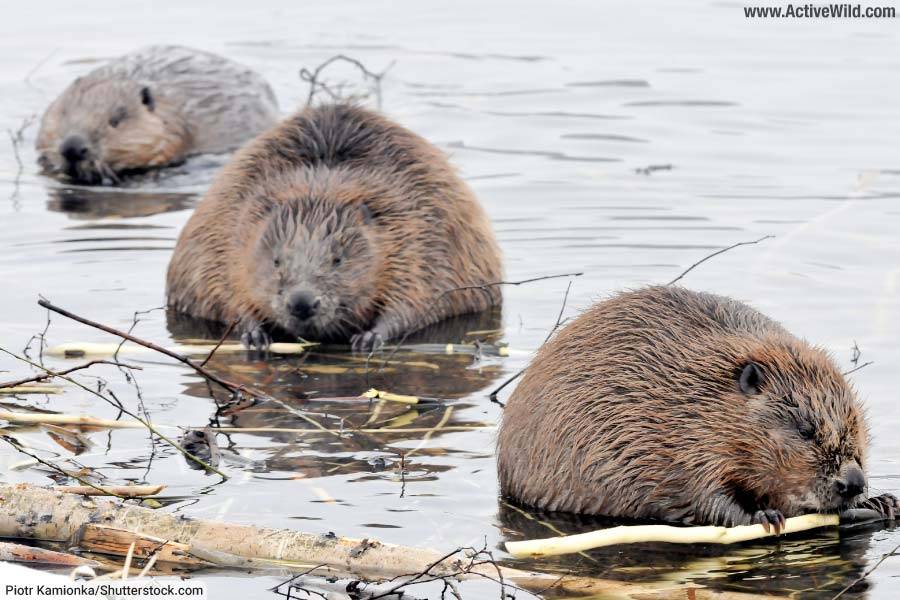
- Type of animal: Mammal
- Family: Castoridae
- Where found: North America, Europe
- Conservation status: Least Concern
Beavers are large rodents with distinctive, paddle-like tails. There are two species of beaver: the North American beaver (Castor canadensis), which lives in the United States and Canada, and the Eurasian beaver (Castor fiber), which is found throughout much of Northern Europe.
The conservation status of both species of beaver is “Least Concern”.
Beavers construct dams by felling trees with their sharp teeth. The resulting pond not only provides the beavers with protection from predators, but also creates a wetland ecosystem in which other species can live.
Both species of beaver eat bark, aquatic plants, grasses and other plants.
Predators of beavers include wolves, American black bears and the wolverine.
Discover More With Active Wild
- You can find out more about North American beavers on this page: North American Beaver Facts
- You can find out more about rodents on this page: Rodents – The Ultimate Guide
- You can see more freshwater animals on this page: Freshwater Animals
- You can see more European animals on this page: European Animals
- You can see more North American animals on this page: North American Animals
Bison
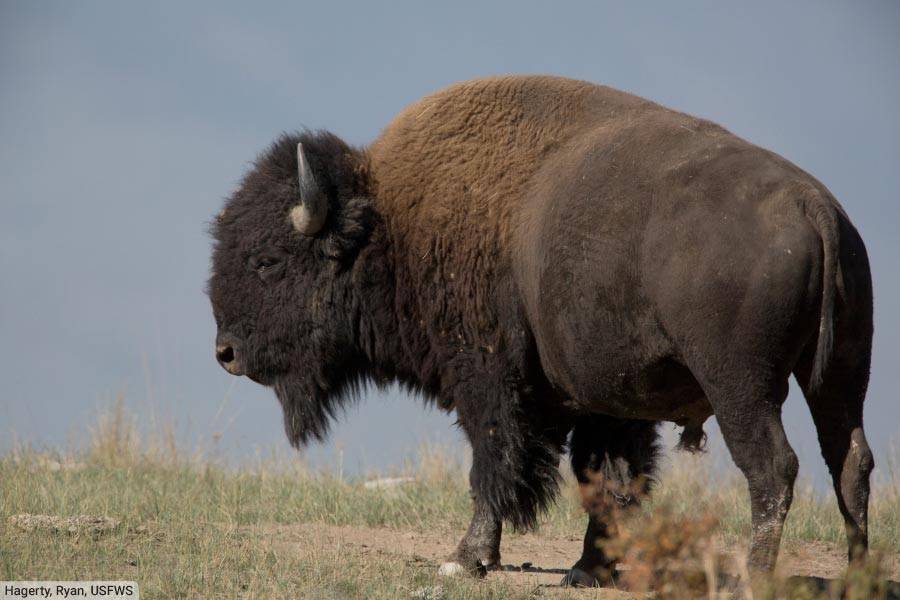
- Type of animal: Mammal
- Order: Artiodactyla (Even-toed ungulates)
- Family: Bovidae
- Where found: North America, Europe
Bison are large, powerful hooved animals that live in herds. There are two species of bison: the American bison (Bison bison), found in grasslands in Canada, the USA and Mexico; and the European bison (Bison bonasus), found in scattered locations in Europe.
Both bison species have the conservation status “Near Threatened”.
The American bison is also known as the buffalo, but is not closely related to “true” buffalo such as the African buffalo and water buffalo (both of which are also herbivores).
The European bison (Bison bonasus) was hunted to extinction in the wild, and has since been reintroduced in several locations in Europe. Today, the bison populations of several European countries, including Poland, Russia and Belarus, number over 1,000 individuals.
Bison eat grasses, sedges, and a variety of other plant matter.
Discover More With Active Wild
- You can find out more about the American bison on this page: American Bison Facts
- You can see more European animals on this page: European Animals
- You can see more North American animals on this page: North American Animals
- You can see more horned animals on this page: Animals With Horns
Deer
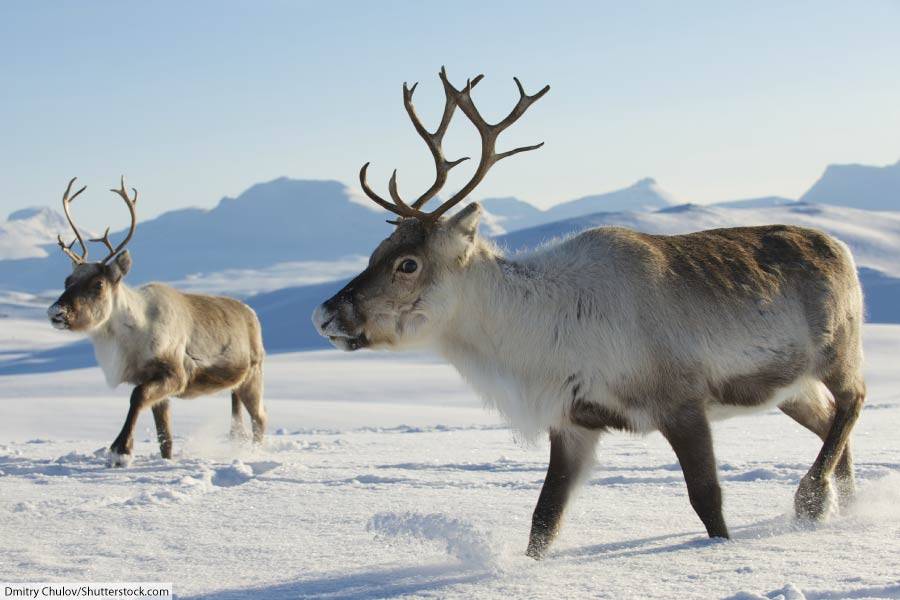
- Type of animal: Mammal
- Family: Cervidae
Deer are hooved, herbivorous mammals belonging to the family Cervidae. Male deer have antlers, which differ from the permanent horns of animals such as antelopes in that they are grown and shed each year of the animal’s adult life. The only female deer species to have antlers is the reindeer.
Deer are found on every continent except Antarctica and Australia. The largest living deer is the moose, which lives in the taiga / boreal forests of the Northern Hemisphere.
Discover More With Active Wild
- You can see more horned animals on this page: Animals With Horns
- You can find out more about mammals on this page: Mammals – The Ultimate Guide
- Discover different types of mammals on this page: Types of Mammals
Elephants
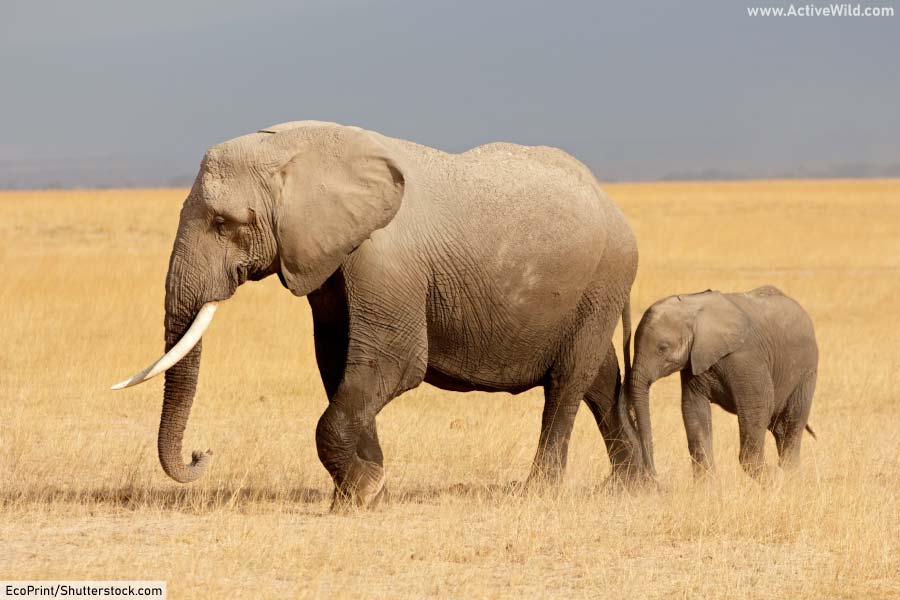
- Type of animal: Mammal
- Family: Elephantidae
- Where found: Africa, Asia
There are three species of elephant. From largest to smallest, they are the: African bush elephant, Asian elephant, and African forest elephant. All three elephants are herbivorous, eating grasses, trees and shrubs.
The African bush elephant is the largest living land animal. Both it and the African forest elephant are found in Africa. The Asian elephant, as its name suggests, is found in Asia.
The conservation status and scientific name of each elephant species is given below:
- African bush elephant Loxodonta Africana Endangered
- African forest elephant Loxodonta cyclotis Critically Endangered
- Asian elephant Elephas maximus Endangered
Both of the African elephants have large ears and deeply wrinkled skin. The Asian elephant has smaller ears and smoother skin than the African species. The skin of the Asian elephant can have a patchy appearance, unlike the plain grey color of the African species.
The most distinctive feature of elephants is the trunk. The trunk is an extension of the elephant’s joined nose and upper lip. It is used to bring food and water to the elephant’s mouth, and to grasp and manipulate other objects.
Tusks, which are extended incisor teeth, are found on both male and female African elephants, but only on male Asian elephants. (Occasionally, female Asian elephants have very small tusks.)
An elephant’s tusks are used both as weapons and as tools for digging and moving objects.
Discover More With Active Wild
- You can find out more about elephants on this page: Elephant Fun Facts
- You can find out more about mammals on this page: Mammals – The Ultimate Guide
- Discover different types of mammals on this page: Types of Mammals
Giant Panda
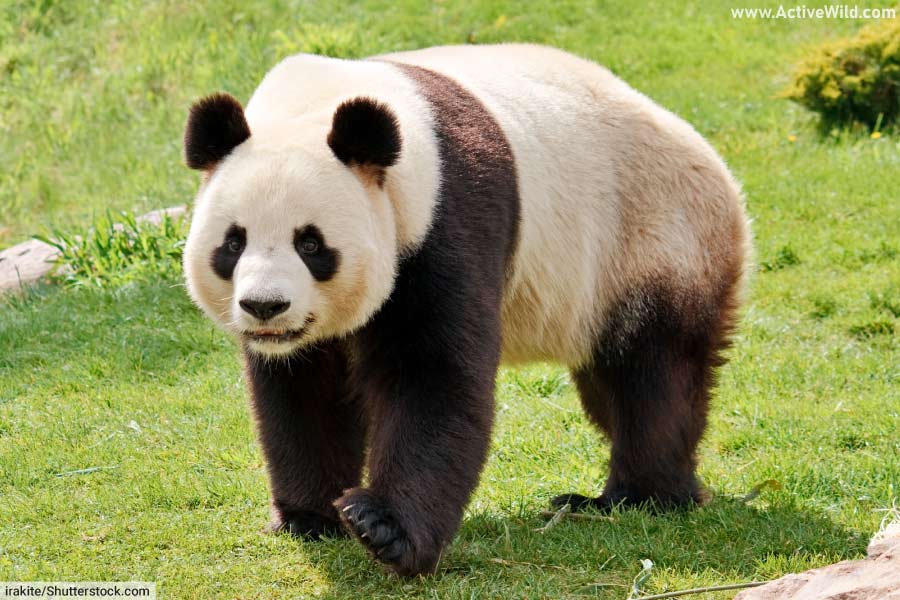
- Type of animal: Mammal
- Scientific Name: Ailuropoda melanoleuca
- Conservation Status: Vulnerable
The giant panda, or panda, is a species of bear found in China. Unlike other bears, most of which are omnivores, pandas are almost entirely herbivorous.
99% of a giant panda’s diet consists of bamboo!
The panda’s powerful jaw muscles, which are needed to cope with tough bamboo stalks, give its face a rounded shape. The panda also has special thumb-like bones in its paws for holding bamboo.
Discover More With Active Wild
- You can find out more about the panda on this page: Panda Facts
- You can see more Asian animals on this page: Asian Animals
- You can see more black and white animals on this page: Black and White Animals
- Discover all eight bears on this page: Types of Bears with Pictures & Facts
Giraffe
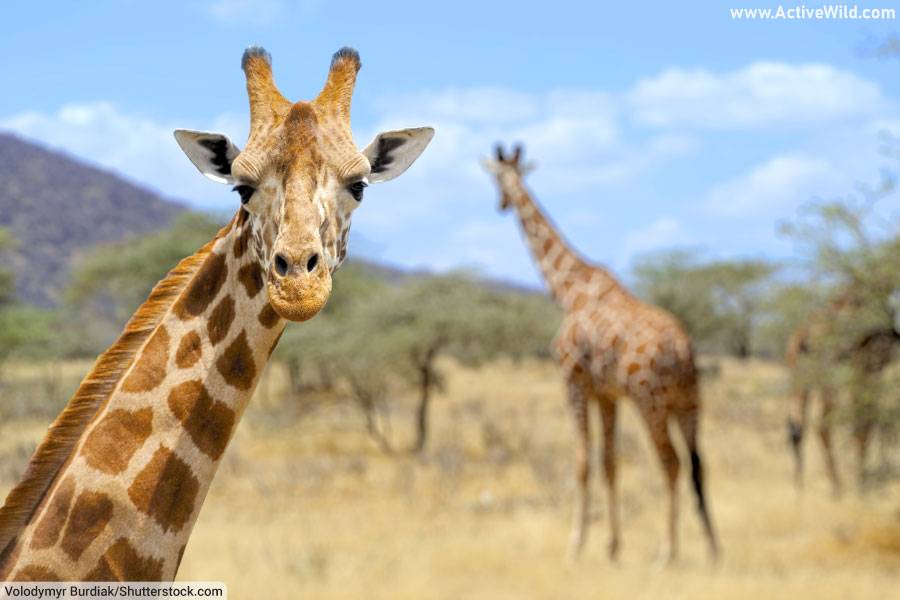
- Scientific name: Giraffa camelopardalis
- Type of animal: Mammal
- Order: Artiodactyla (Even-toed ungulates)
- Family: Giraffidae
- Where found: Africa
- Conservation status: Vulnerable
The giraffe is the world’s tallest animal, reaching heights of up to 5.7 m (18.7 ft). The long-necked herbivore’s height allows it to reach foliage inaccessible to smaller animals.
Each of the nine subspecies (types) of giraffe is found in a separate region in Africa.
The giraffe’s closest relative (and the only other species in the family Giraffidae), is the okapi, another herbivore. Both the giraffe and the okapi have small horns known as ossicones.
Discover More With Active Wild
- You can find out more about giraffes on this page: Giraffe Facts
- You can see more African animals on this page: African Animals
- You can find out more about mammals on this page: Mammals – The Ultimate Guide
- Discover different types of mammals on this page: Types of Mammals
Grass Carp
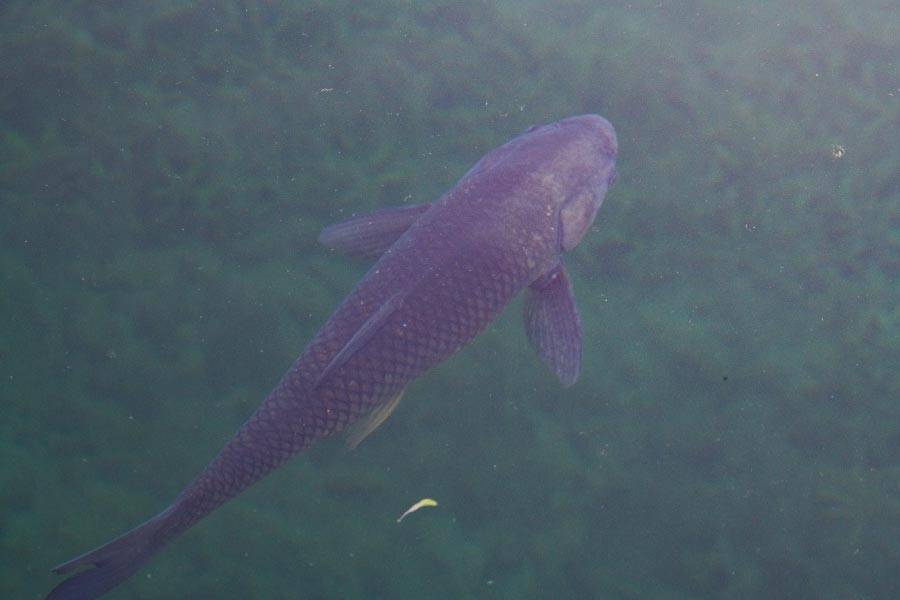
- Type of animal: Fish
- Scientific name: Ctenopharyngodon Idella
- Family: Cyprinidae
- Conservation status: Least Concern
The grass carp is a member of the carp family, Cyprinidae found in cloudy freshwater habitats in Asia. It is a bulky, powerful fish that can reach lengths of up to 2 m / 6.56 ft.
The grass carp is mostly herbivorous, with aquatic plants forming the bulk of its diet. The fish will also eat insects and other invertebrates, meaning that strictly speaking, it is an omnivore.
Discover More With Active Wild
- You can find out more about fish on this page: Fish – The Ultimate Guide
- Discover different types of fish on this page: Types of Fish
Grasshoppers
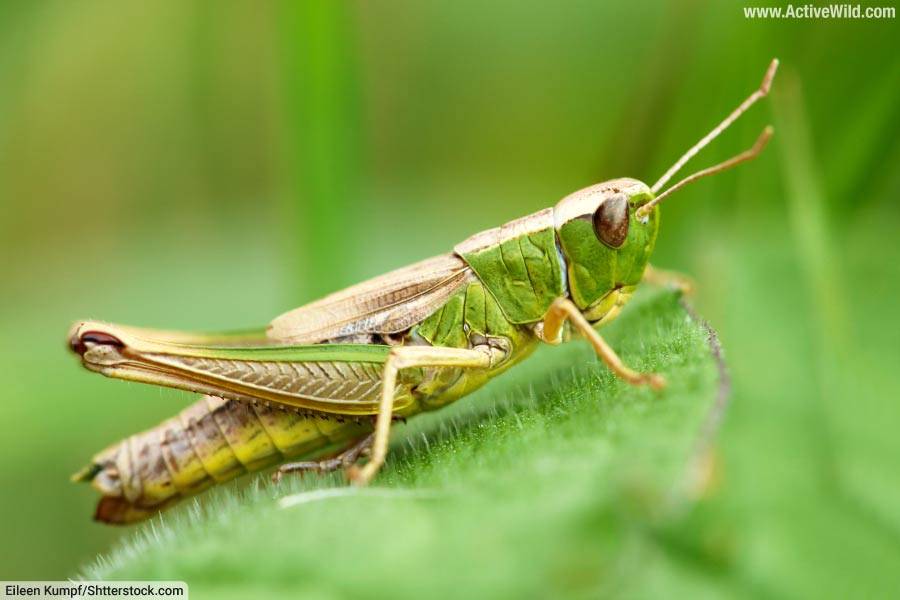
- Type of animal: Insect, suborder Caelifera
Grasshoppers are a group of herbivorous insects found on every continent except Antarctica. Their long hind legs are an adaptation for jumping. Occasionally, certain grasshopper species form large swarms. Swarming grasshoppers are known as locusts.
Locust swarms, which can contain millions, sometimes trillions, of individuals, can cause extensive damage to crops.
Discover More With Active Wild
- You can find out more about insects on this page: Insects – The Ultimate Guide
Green Iguana
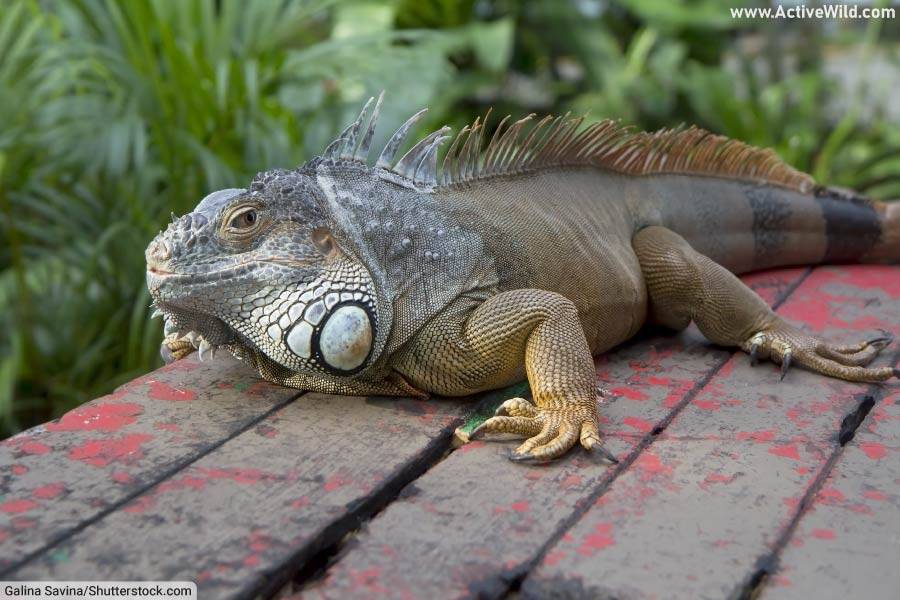
- Scientific name: Iguana iguana
- Type of animal: Reptile
- Family: Iguanidae
- Where found: North America, South America
- Conservation status: Least Concern
The green iguana is a large lizard that lives in forests in Central and South America. The species is commonly called the iguana, with its full name being used to distinguish it from other species in the iguana family, Iguanidae.
Despite its size (the species can reach lengths in excess of 2 m / 6.56 ft.) and fearsome looks, the green iguana is mainly herbivorous. It is an arboreal (tree-dwelling) species, but is also an excellent swimmer. If threatened, it will often dive into a nearby body of water.
Discover More With Active Wild
- You can find out more about iguanas on this page: Iguana Facts
- You can see more rainforest animals on this page: Rainforest Animals List with Pictures & Facts
Hippopotamus
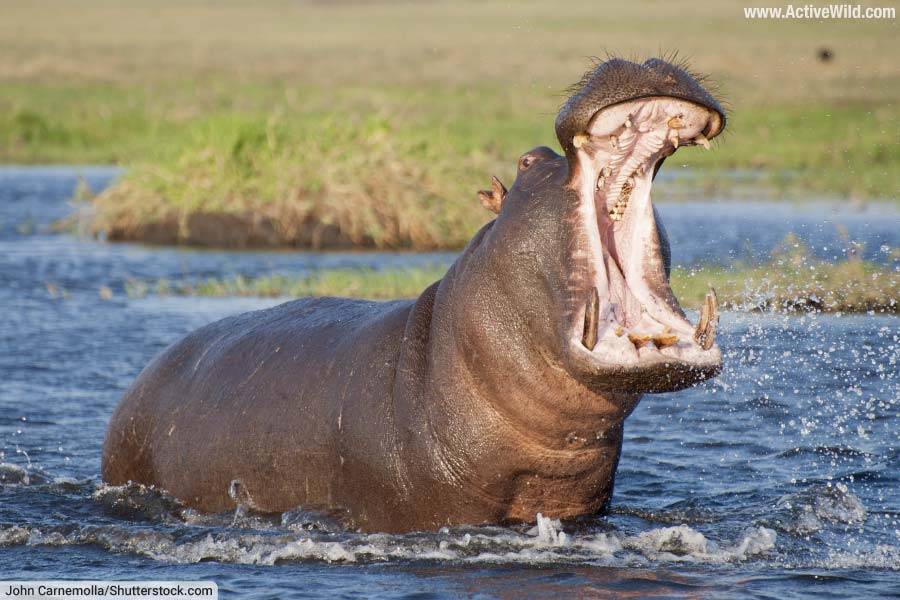
- Scientific name: Hippopotamus amphibius
- Type of animal: Mammal
- Order: Artiodactyla (Even-toed ungulates)
- Family: Hippopotamidae
The hippopotamus, or hippo, is one of the largest living land animals; only the elephants and rhinoceroses (both of which are also herbivores) are bigger.
The hippo has a semi-aquatic lifestyle, spending most of the day in the water, and only emerging in the evening to feed. Although hippos are herbivores, due to their size and aggressive nature they are among Africa’s most dangerous animals.
Discover More With Active Wild
- You can find out more about hippos on this page: Hippo Facts
- You can see more African animals on this page: African Animals
- You can find out more about mammals on this page: Mammals – The Ultimate Guide
- Discover different types of mammals on this page: Types of Mammals
Hoatzin
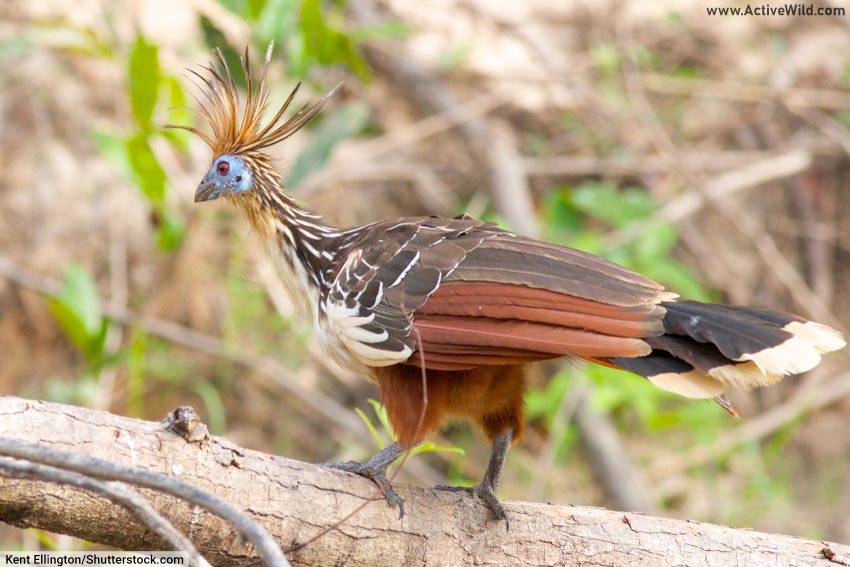
- Scientific name: Opisthocomus hoazin
- Type of animal: Bird
- Family: Opisthocomidae
The hoatzin is a large herbivorous bird found in South America’s Amazon Rainforest. It has gray plumage, with a featherless blue face and a distinctive orange crest on its head.
The hoatzin is unique among birds in two ways. The first is that its digestive system breaks down vegetation by fermentation, in much the same way as cattle.
(The hoatzin is also known as the “stink bird” on behalf of the smell given off by the rotting vegetation in its crop.)
The second is that hoatzin chicks have two claws on each of their wings. These allow the chick to climb before it can fly.
Discover More With Active Wild
- You can see more rainforest animals on this page: Rainforest Animals List with Pictures & Facts
- You can find out more about birds on this page: Birds – The Ultimate Guide
- Discover different types of birds on this page: Types of Birds
Horse
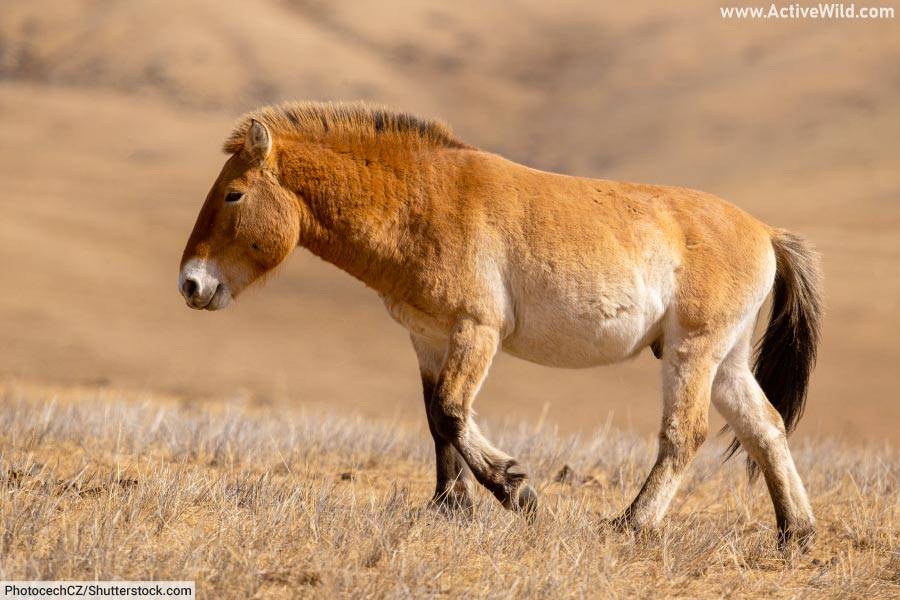
- Scientific name: Equus ferus caballus
- Type of animal: Mammal
- Order: Perissodactyla (Odd-toed ungulates)
- Family: Equidae
The horse is a domesticated subspecies of wild horse. Wild horses are thought to have evolved in North America, before migrating to Europe while the continents were joined by the Bering Land Bridge.
Wild horses were first domesticated around 6,000 years ago. As well as being used as transport, horses have also been used in farming, warfare and in a variety of other roles.
The only other living wild horse subspecies is Przewalski’s horse, an endangered species found in Asia.
Horses are herbivorous grazing animals. Although horses are not ruminants, they are able to break down the cellulose found in grass (unlike humans).
Discover More With Active Wild
- You can find out more about Przewalski’s horse on this page: Przewalski’s Horse Facts
- You can find out more about mammals on this page: Mammals – The Ultimate Guide
- Discover different types of mammals on this page: Types of Mammals
Kangaroos
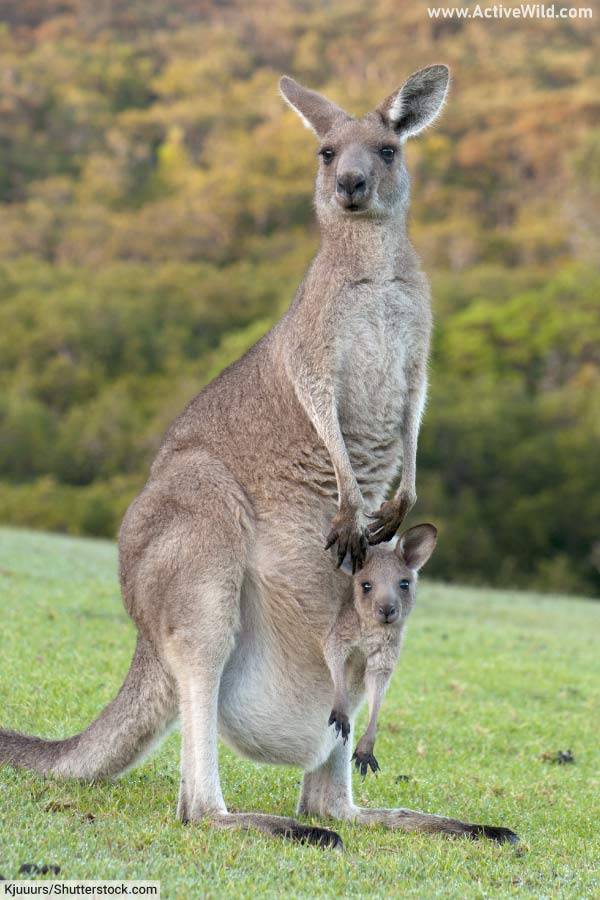
- Type of animal: Mammal
- Family: Macropodidae
Kangaroos are marsupials: mammals whose young develop in a pouch in the body of the female.
There are four species of kangaroo: red kangaroo, eastern grey kangaroo, western grey kangaroo, and antilopine kangaroo.
All four kangaroos are herbivores, eating grasses and shrubs. Although kangaroos are not ruminants, they occasionally produce cud, which is chewed and re-digested.
Kangaroos are the largest species in the family Macropodidae, which means “large foot”. All of the other living members of this family, including wallabies and the quokka, are herbivores.
Discover More With Active Wild
- You can find out more about kangaroos on this page: Kangaroo Facts
- You can see more marsupials on this page: Types of Marsupials
- You can see more Australian animals on this page: Australian Animals
Koala
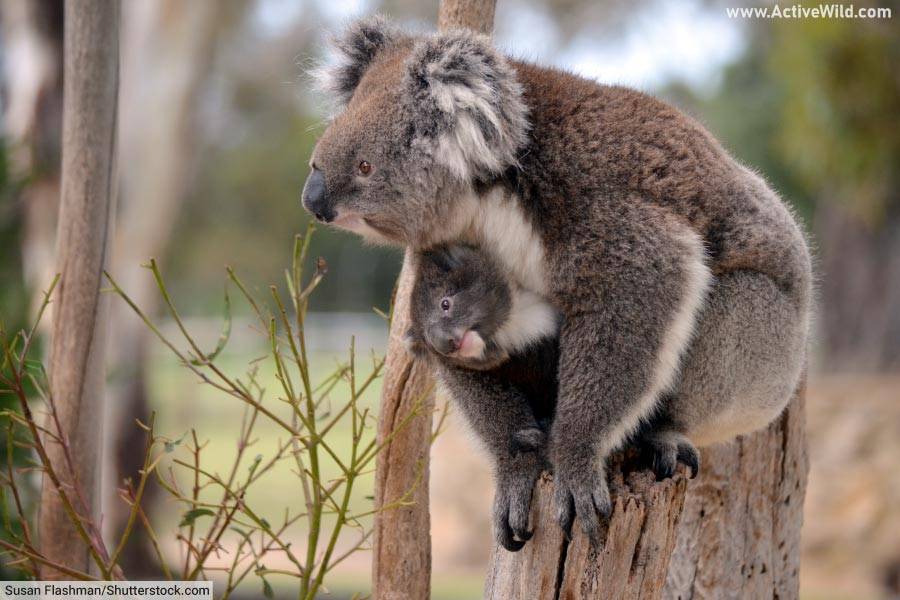
- Scientific name: Phascolarctos cinereus
- Type of animal: Mammal (marsupial)
- Family: Phascolarctidae
- Conservation status: Vulnerable
The koala is a marsupial (pouched mammal) found only in Australia. The diet of this famous herbivore consists almost entirely of eucalyptus leaves.
The leaves contain very little energy, and as a result, the koala tends not to move very fast or very far, and can sleep for up to 20 hours per day!
Discover More With Active Wild
- You can find out more about koalas on this page: Koala Facts
- You can see more marsupials on this page: Types of Marsupials
- You can see more Australian animals on this page: Australian Animals
Garden Snail

- Scientific name: Phascolarctos cinereus
- Type of animal: Mollusk
- Family: Helicidae
- Conservation status: Least Concern
The garden snail is a gastropod mollusk found throughout Europe. Like most land snails, the species is mainly herbivorous, feeding on fruit, flowers and the leaves of trees, crops, and other plants. It eats by scraping food off by using a tongue-like, tooth-covered organ known as a radula.
Discover More With Active Wild
- Discover different types of mollusks on this page: Mollusks Examples
Manatees
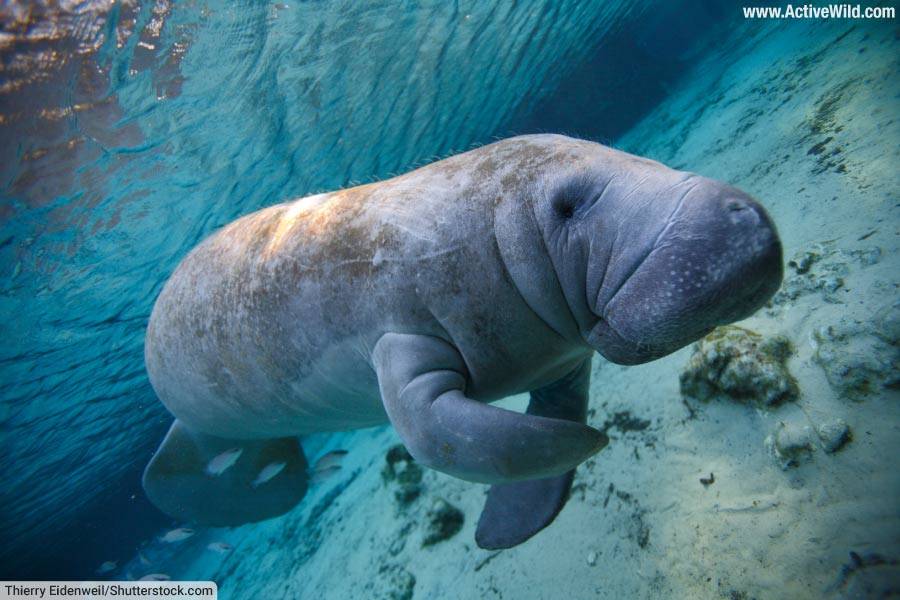
- Type of animal: Mammal
- Family: Trichechidae
Manatees are large, slow-moving, aquatic mammals also known as “sea cows” due to their cow-like appearance and grazing behavior.
There are three species of manatee: the West Indian manatee, West African manatee and Amazonian manatee.
The Amazonian manatee is the smallest species, and the only manatee found only in freshwater habitats (the others are able to inhabit freshwater and saltwater habitats).
All manatees (and the closely-related dugong, found off the coasts of Australia and parts of Asia and Africa) are herbivores. Manatees feed on a variety of aquatic plants, and consume up to 15% of their own body weight each day.
Discover More With Active Wild
- You can find out more about manatees on this page: Manatee Facts
- You can find out more about mammals on this page: Mammals – The Ultimate Guide
- Discover different types of mammals on this page: Types of Mammals
Megabats
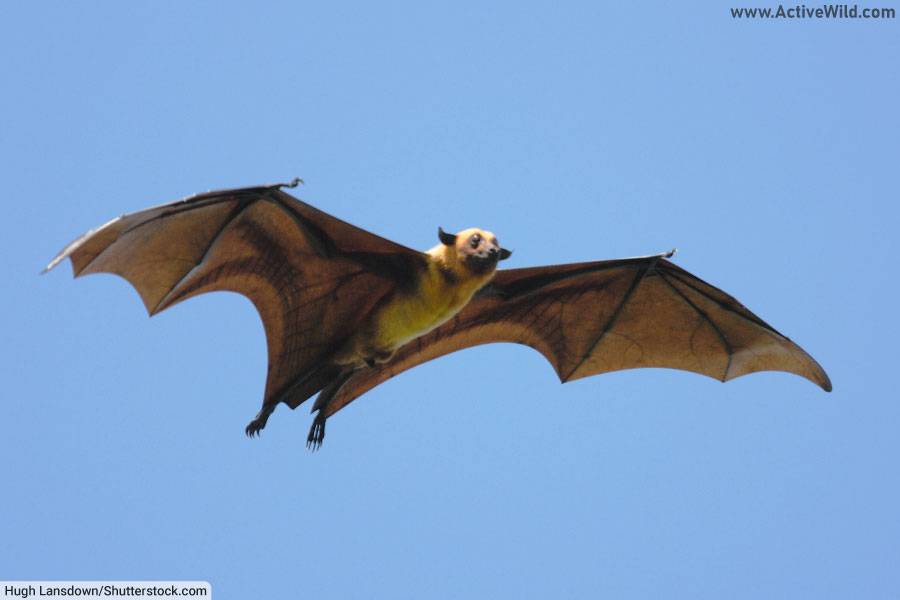
- Type of animal: Mammal
- Family: Pteropodidae
Megabats are bats belonging to the family Pteropodidae. Members of this group of flying mammals are also known as “fruit bats” on account of their primarily fructivorous (fruit-based) diet. Some megabats are nectarivorous (nectar-eating).
Most megabats do not use echolocation, unlike their cousins the microbats, whose echolocation helps them hunt insects.
The wingspans of large megabats, such as the Indian flying fox, can be as large as 1.5 m / 4.92 ft.
Discover More With Active Wild
- You can find out more about bats on this page: Bat Facts
- You can find out more about mammals on this page: Mammals – The Ultimate Guide
- Discover different types of mammals on this page: Types of Mammals
Parrots
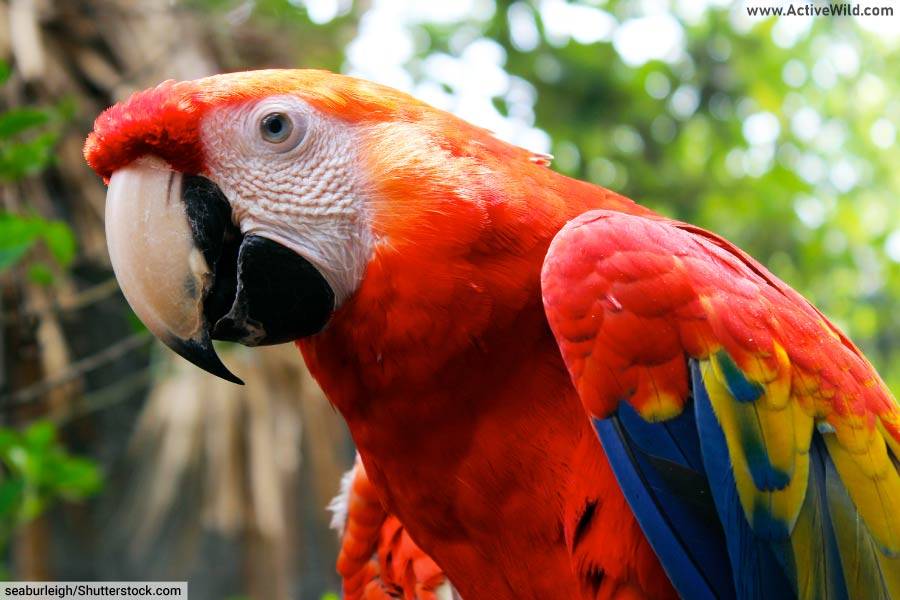
- Type of animal: Bird
- Order: Psittaciformes
There are 370 parrot species. Together, these birds make up the order Psittaciformes. Parrots are relatively large birds, with strong, curved bills, and often colorful plumage.
A parrot’s foot has four claws, the inner two of which face forwards, the outer pair facing backwards. This type of foot is seen in several other tree-living birds, including woodpeckers.
Parrots used their powerful hooked bills to remove the husk of seeds, which form the bulk of their diet. Parrots will also eat fruit, nectar, and other plant matter. Although primarily herbivorous, parrots may occasionally eat insects.
Discover More With Active Wild
- You can find out more about birds on this page: Birds – The Ultimate Guide
- Discover different types of birds on this page: Types of Birds
Parrotfishes
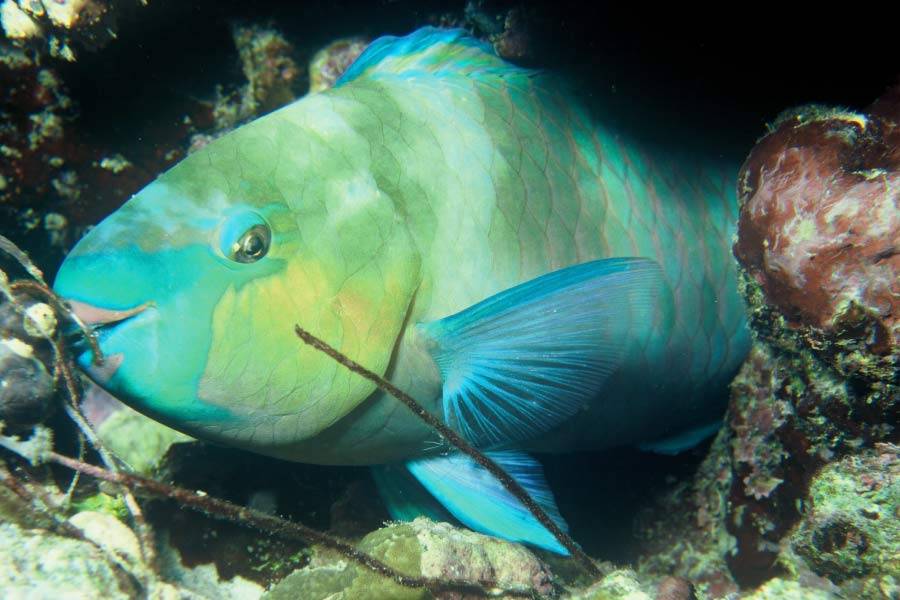
- Type of animal: Fish
- Family: Scaridae
Parrotfishes are a family of fish comprising around 90 species. They are called parrotfish on behalf of their parrot-like beaks, with which the herbivorous fish scrape algae from rocks. (Some larger parrotfish are omnivores, preying on live coral as well as plant matter.)
Most parrotfish live on coral reefs in tropical areas. Some species secrete a mucous cocoon from their mouths, which provides protection while the fish is sleeping.
Discover More With Active Wild
- You can find out more about fish on this page: Fish – The Ultimate Guide
- Discover different types of fish on this page: Types of Fish
Rabbits

- Type of animal: Mammal
- Family: Leporidae
Together with hares (which are also herbivorous) rabbits make up the family Leprodidae.
Rabbits feed on grass, herbs, and other plants. Some rabbits will eat their own droppings, digesting their plant food twice for maximum nutritional value. (Don’t try this at home.)
There are around 40 species of rabbit. Rabbits differ from the closely-related hares by living socially in burrows known as warrens. (Hares are less social, and shelter in shallow holes known as forms.
Discover More With Active Wild
- You can find out more about mammals on this page: Mammals – The Ultimate Guide
- Discover different types of mammals on this page: Types of Mammals
Rhinoceros
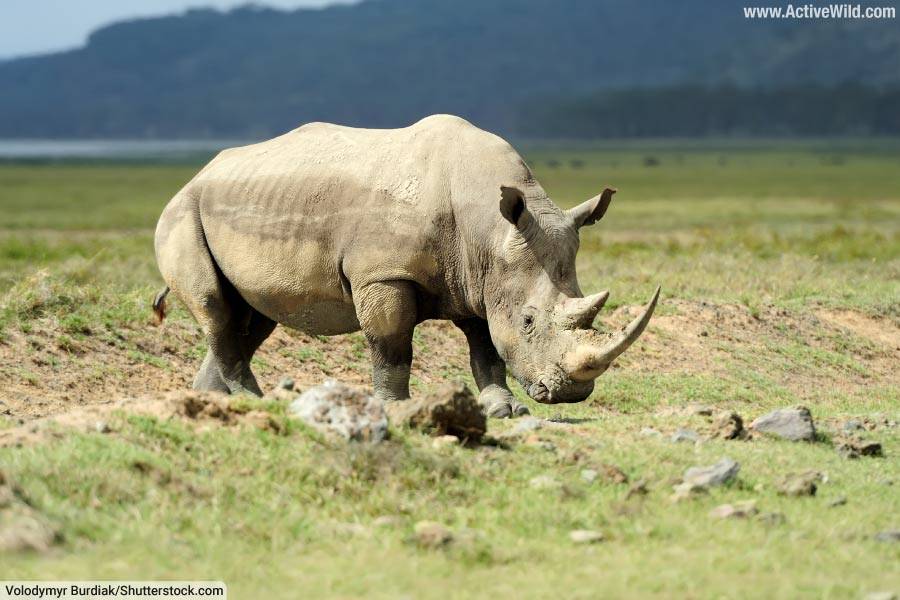
- Type of animal: Mammal
- Order: Perissodactyla (Odd-toed ungulates)
- Family: Rhinocerotidae
The word “rhinoceros” means “nose-horned”, and refers to the distinctive horn (or horns) on a rhino’s nose. Two the five species of rhino – the Indian rhino and Javan rhino – have a single horn; the other three species – the white rhino, black rhino and Sumatran rhino, have two horns.
Both the white rhino and the black rhino are found in Africa; the three other species are found in Asia.
All five species of rhino are threatened. The black, Javan and Sumatran rhinos are all critically endangered. This is due mainly to poaching – the rhinos’ horns are a valuable ingredient in traditional eastern medicine.
All five rhino species are herbivores.
Discover More With Active Wild
- You can find out more about rhinos here: Rhino Facts
- For information, pictures and facts about the black rhino, visit this page: Black Rhino Facts
- You can find out more about mammals on this page: Mammals – The Ultimate Guide
- Discover different types of mammals on this page: Types of Mammals
Sloths (Three-Toed)
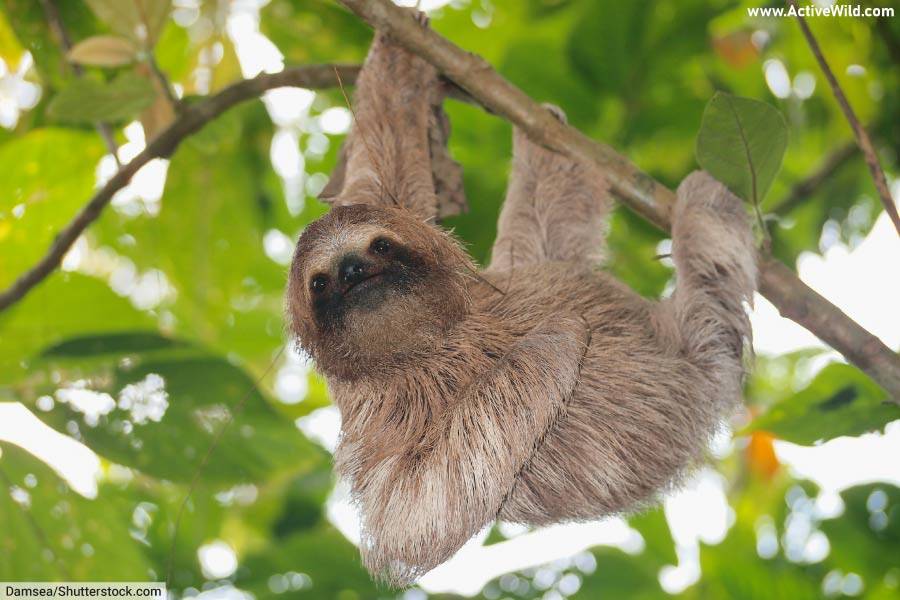
- Type of animal: Mammal
- Family: Bradypodidae
- Genus: Bradypus
The six species of sloth are divided into two groups: two-toed sloths and three-toed sloths. There are two species of two-toed sloth and four species of three-toed sloth.
The members of each group are differentiated by the number of toes on their forelimbs; all sloths have three toes on their hindlimbs.
Two-toed sloths are larger and faster-moving than three-toed sloths, and are omnivores rather than herbivores.
Three-toed sloths are folivores – their herbivorous diet consists almost entirely of leaves. Because leaves contain relatively little energy and are difficult to break down, three-toed sloths have one of the longest digestive processes of all animals.
Discover More With Active Wild
- You can find out more about sloths on this page: Sloth Facts
- You can see more rainforest animals on this page: Rainforest Animals List with Pictures & Facts
- You can find out more about mammals on this page: Mammals – The Ultimate Guide
- Discover different types of mammals on this page: Types of Mammals
Tapirs

- Type of animal: Mammal
- Order: Perissodactyla (Odd-toed ungulates)
- Family: Tapiridae
Tapirs are large, pig-like animals with flexible, prehensile noses. There are five species of tapir: Brazilian tapir, Malayan tapir, Baird’s tapir, kabomani tapir, and mountain tapir.
The Malayan tapir, which is found in Asia, is the only tapir found outside of either Central or South America. All tapirs live in forest habitats.
The Brazilian, or South American Tapir, is the largest land mammal found in the Amazon Rainforest.
Discover More With Active Wild
- You can find out more about tapirs here: Tapir Facts
- You can see more rainforest animals on this page: Rainforest Animals List with Pictures & Facts
Tortoises
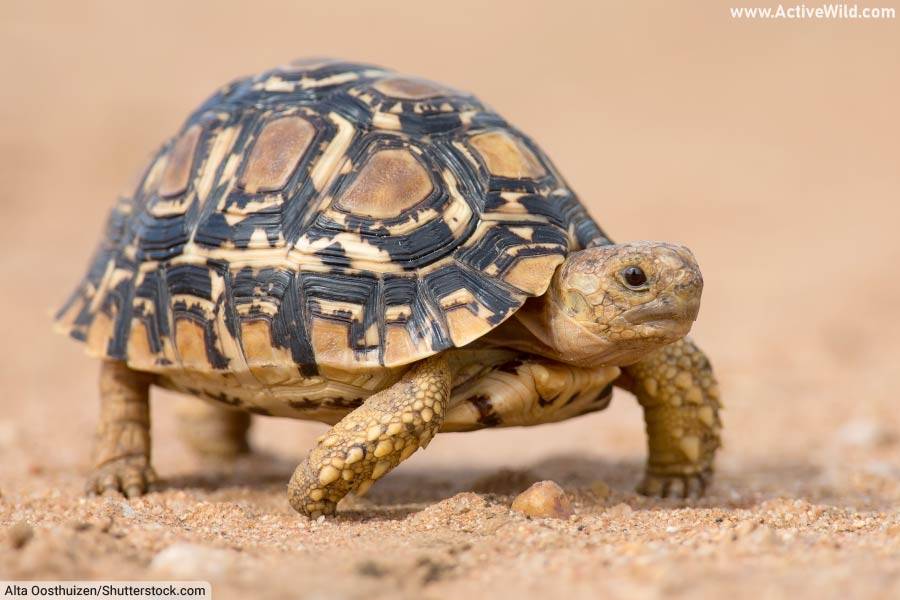
- Type of animal: Reptile
- Family: Testudinidae
Tortoises are slow-moving reptiles with shells. The name “tortoise” usually refers to members of the family Testudinidae, but can also include other land-dwelling turtles.
All turtles (including tortoises) belong to the reptilian order Testudines.
Tortoises are the world’s longest-lived land animals; the lifespan of some species can be over 150 years.
A tortoise hatches from its egg with the aid of a special egg tooth. After hatching, tortoises have to fend for themselves; their parents play no part in the raising of their infants.
Tortoises have an almost exclusively herbivorous diet, although invertebrates may occasionally be consumed.
There are around 45 species of tortoise. The three largest tortoise species are, from largest to smallest: the Galápagos tortoise, the Aldabra giant tortoise and the African spurred tortoise.
Discover More With Active Wild
- You can find out more about reptiles on this page: Reptiles – The Ultimate Guide
- Discover different types of reptiles on this page: Types of Reptiles
- Discover different types of turtles on this page: Types of Turtles
Zebras

- Type of animal: Mammal
- Order: Perissodactyla (Odd-toed ungulates)
- Family: Equidae
Zebras are members of the horse family Equidae. Like the other members of the family, zebras are herbivores. Grazing animals, zebras are equipped with large incisors (the large teeth at the front of the jaw) for cutting grass, and rough molars for grinding up the tough plant material.
There are three species of zebra: plains zebra, mountain zebra and the endangered Grévy’s zebra.
All three zebras are found in Africa. The plains zebra is the most common and widespread zebra; Grévy’s zebra is not only the largest zebra, but also the world’s largest wild horse species. The mountain zebra is found in mountainous terrain in southeastern Africa.
Discover More With Active Wild
- You can find out more about zebras on this page: Zebra Facts
- You can see more African animals on this page: African Animals
- You can see more black and white animals on this page: Black and White Animals
- You can find out more about mammals on this page: Mammals – The Ultimate Guide
- Discover different types of mammals on this page: Types of Mammals
Discover More With Active Wild
- Find out more about the animal kingdom on this page: Animals
- You can see examples of omnivores on this page: Examples Of Omnivores
- Discover the different types of animals: Types of Animals
- Discover animals from all around the world on this page: Animals Around The World
- Discover animals that live in different habitats on this page: Animal Habitats
The post Examples Of Herbivores – Herbivorous Animals List, Pictures & Interesting Facts appeared first on Active Wild.